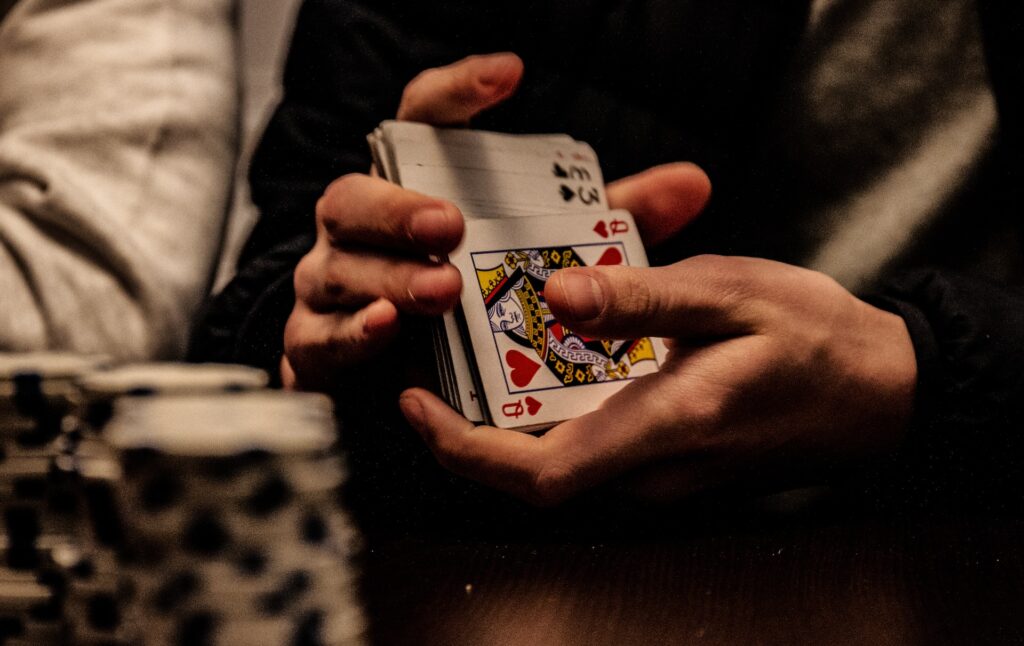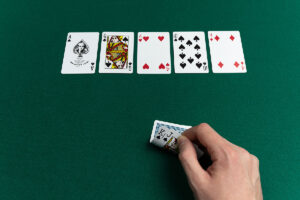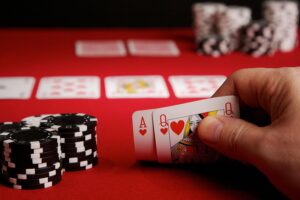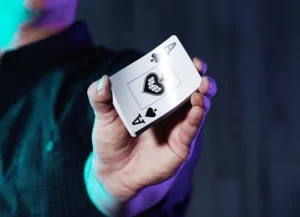Poker’s a game of skill, strategy, and a little bit of luck, but it all starts with dealing the cards. If you’ve ever wondered how to properly distribute cards at a poker table, you’re not alone. The dealer’s role is crucial in setting the game’s pace and ensuring fairness, so understanding the process is key.
Whether you’re hosting a friendly game at home or stepping into a more competitive setting, knowing how to deal cards the right way can make all the difference. From shuffling techniques to the order of distribution, I’ll walk you through the essentials to keep the game running smoothly and professionally.
Understanding The Basics Of Dealing Cards In Poker
Dealing cards in poker involves precise steps that ensure fairness and consistency during the game. First, I shuffle the deck thoroughly, mixing the cards to eliminate any patterns or predictable sequences. Proper shuffling is crucial to prevent any player from gaining an unfair advantage.
Next, I cut the deck before distribution, typically allowing the player to my right to perform the cut. This step adds an extra layer of randomness and ensures that no one knows the position of the cards in the deck.
I distribute the cards in a clockwise direction, starting with the player to my immediate left. Each player receives one card at a time, and I continue this process until everyone has the required number of cards for the poker variant being played. For instance, in Texas Hold’em, I deal each player two cards.
Timing and consistency are key when dealing. I ensure all players receive their cards in the same rhythm, preventing suspicion of favoritism or error. Handling misdeals immediately is important to maintain the game’s integrity.

Key Materials Needed For Dealing
Dealing cards in poker requires specific materials to create a professional and seamless experience. Below are essential items every dealer should have for effective card distribution.
Standard Deck Of Cards
A high-quality standard deck of 52 cards is essential, excluding jokers unless the variant demands them. Cards should be clean, durable, and sized for easy handling. Plastic-coated or 100% plastic cards work best due to their durability and resistance to wear during repeated games. I always ensure that cards are shuffled thoroughly to maintain fairness and reduce suspicion of any patterns.
Poker Table Setup
A proper poker table enhances gameplay and simplifies dealing. Poker tables typically feature a felt surface designed to prevent cards from sliding uncontrollably. The table’s shape—round, oval, or rectangular—should suit the number of players. I ensure sufficient space for the dealer chip stack, community cards, and player bets. Adequate lighting is also crucial, avoiding glare to maintain visibility while dealing cards efficiently.
Step-By-Step Guide To Dealing Cards In Poker
Dealing cards accurately and consistently is essential for a fair poker game. This guide breaks the process into clear steps to ensure professionalism and integrity.
Shuffling And Cutting The Deck
I ensure the deck is shuffled thoroughly to eliminate any potential patterns or predictability. I use at least three shuffle techniques, such as riffle, overhand, or pile shuffles, to achieve complete randomness. After shuffling, I offer the deck to the player on my right for cutting. This reinforces trust and fairness by adding another layer of randomness.
Determining The Dealer Position
I establish the dealer position with a clear method, specific to the game’s initial setup. For casual games, I deal one card face-up to each player, and the highest-ranking card designates the dealer. For ongoing games, I use a dealer button, advancing it clockwise after each hand. This ensures that every player takes turns at the dealer position.
Distributing The Cards Properly
I distribute cards clockwise, starting with the player to my immediate left. For games like Texas Hold’em, I deal one card at a time to each player until everyone has two cards. I ensure that the cards are dealt face down and held low to avoid exposing them. If an error occurs, such as dealing the wrong number of cards, I pause, correct the issue, and proceed based on standard misdeal rules for the specific poker variant. This ensures consistency and maintains the game’s flow.
Rules And Etiquette When Dealing Cards
Understanding and following proper rules and etiquette when dealing cards ensures a fair and enjoyable poker game. Proper conduct prevents disputes and enhances the professionalism of the gameplay.
Following Game-Specific Rules
Each poker variant has specific rules for dealing cards. In Texas Hold’em, I deal two face-down cards to each player, followed by the community cards in a specific sequence (flop, turn, river). For Omaha, each player gets four cards, dealt face down, with similar phases for community cards. It’s essential to follow the designated dealing patterns for the chosen game to avoid inconsistencies.
I also verify house-specific rules before dealing casual or tournament games. This includes blind structures, betting rounds, and handling specific scenarios such as misdeals or exposed cards. Adhering to these rules ensures players have a consistent experience across sessions.
Maintaining Fair Play
Policing fairness starts with thorough shuffling and cutting. I shuffle sufficiently, combining techniques like the riffle, overhand, and strip shuffle, to randomize the cards completely. Once shuffled, the player to my right cuts the deck, enhancing transparency.
I deal cards smoothly, one at a time, in a clockwise direction without exposing them. My pace stays steady so each player feels treated equally. If a misdeal occurs, such as dealing extra cards or exposing a card, I halt the action and restart per standard rules to maintain transparency.
Integrating impartiality in all actions eliminates favoritism. By maintaining consistency in mechanics like shuffling, cutting, and dealing, I ensure fair play and player trust in every game.
Common Mistakes To Avoid While Dealing
Avoiding common mistakes while dealing ensures fairness and professionalism. Errors can disrupt gameplay and create disputes.
- Failing to Shuffle Thoroughly
Inadequate shuffling reduces randomness, enabling players to predict card outcomes. Always shuffle using multiple techniques, like the riffle or overhand shuffle, and mix properly before cutting the deck.
- Incorrect Card Distribution
Improper dealing, such as skipping players or dealing out of order, confuses the game and leads to misdeals. Deal in a consistent clockwise direction, starting with the player to your left.
- Exposing Cards During Dealing
Accidentally revealing card faces compromises the integrity of the round. Ensure cards stay face down and grip them by the long edges to minimize accidental exposure.
- Misidentifying the Dealer Position
Starting from the wrong dealer disrupts the flow of the game. Use a card draw or dealer button to establish and maintain dealer positioning accurately.
- Handling Misdeals Poorly
Ignoring misdeals or mishandling corrections heightens player frustration. Announce misdeals immediately, retrieve all cards, and restart the distribution process.
- Insufficient Deck Maintenance
Using worn or damaged cards makes shuffling and dealing difficult. Regularly inspect the deck for defects and replace unfit cards promptly.
- Overlooking Table Etiquette
Casual game setups with improper lighting or cluttered tables disrupt the dealing process. Maintain a clean, well-lit surface and follow proper game conduct.
- Failing to Adjust for Variant Rules
Disregarding specific poker variant rules, such as card counts in Omaha or Texas Hold’em, leads to disputes. Always confirm the variant and deal the correct number of cards for the game type.
Preventing these mistakes through consistent technique and attentiveness reinforces trust and ensures seamless gameplay.
Conclusion
Mastering the art of dealing cards in poker goes beyond simply following steps; it’s about ensuring fairness, professionalism, and a seamless gaming experience. By paying attention to details like shuffling, cutting, and maintaining consistency, you can elevate any poker game, whether it’s a casual night with friends or a competitive setting.
As a dealer, your role sets the tone for the game. Staying impartial, avoiding common mistakes, and adapting to specific rules not only upholds integrity but also enhances the enjoyment for everyone at the table. A well-dealt game is the foundation of great poker.



